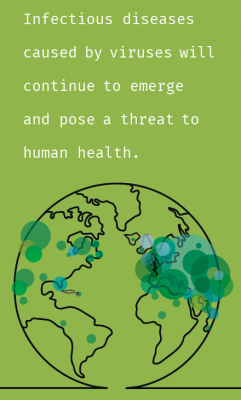
Most coronaviruses usually cause the common cold, but, as happened with the SARS virus in 2003 and the MERS virus in 2008, every few years a new coronavirus that can cause severe disease emerges. At the same time, we are still susceptible to older threats we have known for a long time. For example, last summer, the measles virus rapidly spread across several continents and the United States risked losing its measles-eradicated status.
Whether worldwide efforts to surround the outbreak of COVID-19, the disease caused by SARS-CoV-2, and develop a vaccine ultimately succeed or fail, one thing is certain: Infectious diseases caused by viruses will continue to emerge and pose a threat to human health. “What we need is permanent infrastructure that allows us to respond rapidly to these threats,” says LJI Professor Erica Ollmann Saphire, Ph.D. “Even if a future pandemic is caused by a different virus, the basics remain the same.”

Many of the necessary tools are already in place at the Institute. They include a broad effort to understand the fundamentals of how we can harness the immune system to protect against new infectious threats. The Immune Epitope Database (IEDB), which contains the world’s most comprehensive collection of immune targets, allows LJI Professor Alessandro Sette, Dr. Biol.Sci., to scour millions of entries for coronavirus-related information at a moment’s notice, and apply machine learning approaches to identify new potential targets. These data are made public to inform efforts to develop new diagnostics, therapeutics, and vaccines.
Dr. Saphire built a state-of-the-art cryo-electron microscopy and antibody discovery facility at LJI to reveal which parts of these emerging viruses, including SARS-CoV-2, can be targeted to inspire immune defense or new drugs. “With the right arsenal in place, we can accomplish what seemed inconceivable just a few years ago—create a treatment or vaccine fast enough to stop the next outbreak before it becomes a global threat to human health,” says Dr. Saphire.


